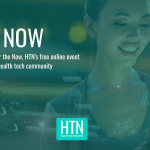
How Health IT Teams Can Optimize EHR Workflows
In terms of optimization approaches, application rationalization, clinical workflow analysis and patient journey mapping help to simplify the operating environment and establish a baseline for the end-user experience.
App rationalization is a strategic process focused on eliminating or replacing inefficient and outdated tools and consolidating redundancies. Effective application rationalization requires executive sponsorship (clinical and operational) and a comprehensive understanding of use cases, platforms and capabilities. Although the focus of app rationalization is the EHR and patient care platforms, it is important to evaluate the entire ecosystem of supporting information systems. Following application rationalization, the real work begins in the form of clinical workflow analysis and patient journey mapping.
Clinical workflow evaluation is all about streamlining administrative and clinical process. To that end, healthcare organizations have taken a page from the manufacturing sector in terms of process and methodology. For example, Lean Six Sigma management principles have been introduced in hundreds of healthcare organizations in an effort to instill rigor and discipline within these exercises. When selecting workflow improvement candidates, the Pareto rule (that 80 percent of consequences come from 20 percent of causes) applies. Put simply, healthcare organizations should avoid trying to boil the ocean and instead focus on the top workflows that will drive maximum value and ROI. Patient journey mapping is another helpful exercise, and it helps to keep the patient at the center of all optimization exercises. Patient journey mapping is exactly what it sounds like: a documentation of all patient touchpoints (and pain points) within the healthcare organization.
Once the foundation has been established in terms of rationalization and clinical process improvement, healthcare organizations can begin to layer emerging technologies through platform integration. Through the course of the pandemic, we saw firsthand the power and reach of virtual care platforms, and the benefits of emerging technologies cannot be overstated. Progressive healthcare organizations are already experimenting with next-generation Internet of Things devices for telemetry and remote patient monitoring. Connectivity with wireless sensors and the implementation of clinical decision support tools hold the promise of a safer future. Voice recognition and AI are poised to deliver even greater benefits, from ambient dictation to clinical documentation generation. All of these enhancements will decrease data entry and medical errors while enhancing the human connection between patient and caregiver.
EXPLORE: IT operations services can transform healthcare technology investments.
Best Practices for Approaching EHR Optimization and Interoperability
The major takeaway is that EHR optimization requires a multidisciplinary team dedicated to continuous process improvement. In addition to IT, clinical, operations and quality control stakeholders should constantly assess how the system is functioning and where improvements can be made. This can be accomplished through app rationalization or the addition of new tools to make engagement with the EHR an easier experience.
Education and training should also be a major component of optimization and integration initiatives. For example, updated EHR workflows should be socialized with clinical end users long before they go live. Similarly, new integrations can be a force multiplier for clinicians, but only if they know how to properly leverage the technology. Policy and governance structures must be in place prior to the introduction of these new technologies, particularly AI, in order to define security requirements and parameters for use. And don’t forget the patients. Patient education should always be included in the training strategy.
Finally, organizations should never forget the importance of cybersecurity. Not only is protecting patient information a requirement, but preventing and minimizing the impact of a cyberattack can save organizations money from having to pay a ransom or from costs incurred due to downtime. Most important, having a strong security posture and cyber resilience strategy in place better supports patient care. Security teams should be included in the EHR optimization process to identify vulnerabilities related to access and encryption.
DISCOVER: Is your healthcare organization using the cloud to its fullest potential?
How Technology Partners Can Support EHR Optimization
Partners such as CDW have experts on hand with decades of EHR experience who can help healthcare organizations conduct high-level assessments of their systems, do gap analysis and create roadmaps. CDW can also guide organizations looking to migrate EHR workflows to the cloud or offer support to healthcare security teams that are understaffed or lack the skill sets needed to protect patient data against today’s threats.
As healthcare organizations approach interoperability with the EHR, whether focusing on natural language processing or other AI- and machine learning-based tools, it’s important to collaborate with vendors and partners.
This article is part of HealthTech’s MonITor blog series.





